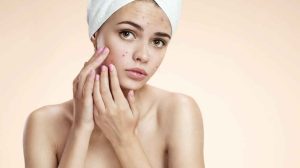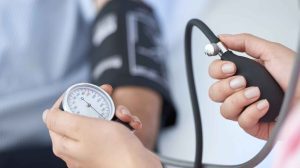Phototherapy (UV radiation from special lamps) is used to treat several skin diseases, including psoriasis. This is an effective treatment, but should be done with caution as it can cause burns and skin cancer
Already many years ago, doctors and patients noticed that in the summer there is a benefit in psoriasis symptoms. It turned out that the sun’s radiation counteracts the inflammatory activity and the overproliferation of the skin cells in psoriasis.
When receiving UV radiation from special lamps treatments, pay attention to the possible appearance of sun damage such as pigmentation, spots and wrinkles. There is also a potential (rare) risk of developing skin cancer.
The treatment itself lasts a few minutes, and is comfortable and safe, but requires coming 2 to 3 times a week to a phototherapy institute. During the treatment, the level of exposure is gradually increased to avoid burns.
What is phototherapy?
Phototherapy is a treatment using UV radiation for many skin diseases including psoriasis , u003ca href=u0022https://hostandcare.com/health/atopic-dermatitis-eczema-truth/u0022 data-type=u0022postu0022 data-id=u00222393u0022u003eatopic dermatitis (asthma of the skin) u003c/au003e, vitiligo , urticaria and lichen planus. The use of phototherapy has been known for many years and is considered an effective and safe treatment.
How does phototherapy work?
Already many years ago, doctors and patients noticed that in the summer, following increased exposure to the sun, there is a real benefit in the symptoms of psoriasis. Following this distinction, the idea arose to use UV radiation to treat various skin diseases. It turned out that the sun’s radiation counteracts both the inflammatory activity and the overproliferation of the skin cells in psoriasis.
Are there several types of phototherapy or is it a uniform treatment?
There are several types of phototherapy: broad-range UVB treatment (the length of the UV waves ranges from 290 to 320 nm), narrow-range UVB treatment (the length of the UV waves is 311 nm) and PUVA treatment (see a detailed explanation below) ). It should be noted that the treatment in the Dead Sea is also partly a type of phototherapy.
How is the treatment done?
The treatment is done standing or lying down, during which the affected skin is exposed to UV radiation emitted from lamps that look like fluorescent lamps. The treatment is done without clothes, but the eyes (using goggles) and the genitals must be protected. The treatment is given 2 to 3 times a week. During the treatment, the level of exposure increases gradually to avoid burns: you start with a treatment that lasts less than a minute, and after a while you reach an exposure that lasts several minutes.
Who should not receive phototherapy?
The treatment must not be given to patients with melanoma skin cancer, to those suffering from diseases aggravated by exposure to sunlight (such as lupus ) or to those receiving certain medications that may cause increased sensitivity to sunlight. Therefore, before starting UV radiation from special lamps, you must go to a dermatologist to confirm the treatment.
When receiving UV radiation from special lamps treatments, pay attention to the possible appearance of sun damage such as pigmentation, spots and wrinkles. There is also a potential risk of developing skin cancer. Therefore, phototherapy patients must be examined regularly by a dermatologist. An examination of the entire skin area using a dermoscope (a flashlight-like optical device that helps detect skin cancer) is required.
What are the possible side effects of phototherapy?
Can phototherapy treatments cause burns?
Yes. These treatments may cause burns. That is why the exposure to UV radiation is done gradually: the first time the treatment is given for only a few seconds, and occasionally the duration of the exposure is extended a little. However, even if the UV radiation from special lamps treatments are given gradually – as required – it sometimes happens that they cause minor burns. In such cases there is no need to stop the treatment, but the increase in exposure should be slowed down even more.
What is PUVA treatment?
This is a combined treatment that includes taking the drug metaxalone together with UVA treatment (between 320 and 400 nm). The drug increases the skin’s sensitivity to UVA rays and as a result they penetrate deeper into the skin than UVB rays. Despite the deeper penetration in PUVA treatment, the UVA rays cause less damage than the UVB rays. As part of this treatment, the patients take the methoxsalen tablets, and two hours after taking the medicine they are exposed to UVA.
Warning: after using methoxsalen there is an increased sensitivity to solar radiation. This sensitivity starts within an hour after taking methoxsalen and passes within eight hours. During this period of time, exposure to the sun’s radiation must be avoided, and if this cannot be avoided, one must protect oneself from it by wearing long clothing, a hat, sunglasses and applying a high-factor sunscreen to every exposed piece of skin.
And another warning: PUVA treatments increase the risk of developing different types of skin cancer: basal cell carcinoma (BCC), squamous cell carcinoma (SCC) and melanoma. That is why psoriasis patients treated with PUVA must be continuously monitored. It should be noted that due to the increased risk of skin cancer, the use of PUVA treatments is decreasing.
Where can phototherapy be done?
You can receive UV radiation from special lamps in the skin departments of hospitals. The treatment is also provided at various health insurance institutes.
What do I have to do to get phototherapy?
The phototherapy treatment is included in the basket of services in cases where it is considered an acceptable medical treatment. It is the attending dermatologist who decides – based on medical judgment – whether the patient is eligible for phototherapy treatments. It should be noted that there is no limit to the number of phototherapy treatments that the dermatologist may approve for the patient.
However, there is an important limitation: the phototherapy treatments must be given by skilled therapists – preferably therapists with formal training in one of the medical professions such as nursing and biotechnology. In any case, the treatments must be supervised by a specialist dermatologist.
Am I entitled to combine phototherapy with treatment in the Dead Sea?
In the health basket, it was determined that both Dead Sea treatment and phototherapy treatment cannot be done in the same calendar year. Therefore, the patients must decide whether they want to receive phototherapy or treatment in the Dead Sea that year. However, a patient who was hospitalized after the phototherapy treatment for more than a week in the dermatology department for the treatment of psoriasis, will also be entitled to treatment at the Dead Sea in the same calendar year.
What is home phototherapy?
You can purchase a phototherapy device and do the UVB treatments at home. This is a particularly convenient solution for those who do not live close to phototherapy centers. However, it should be noted: even in home phototherapy, it is necessary to be monitored by a dermatologist before and during the treatment.
There are home phototherapy devices for the whole body, and there are devices that are specially adapted to the treatment of psoriasis on the hands and feet. There is also a light-weight manual phototherapy device that is suitable for the treatment of local lesions, for example on the scalp. The handle of the device is brush-like – which allows you to comb the hair and attach the device to the psoriatic lesions on the scalp. A home phototherapy device is not included in the medicine basket, and people interested in purchasing such a device should do so privately.












Add Comment